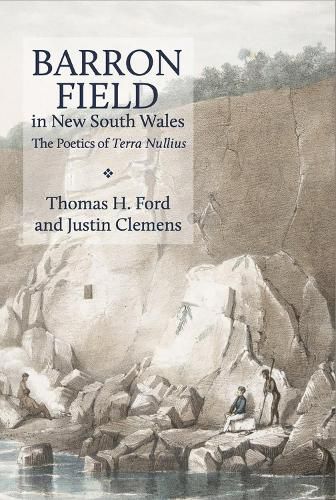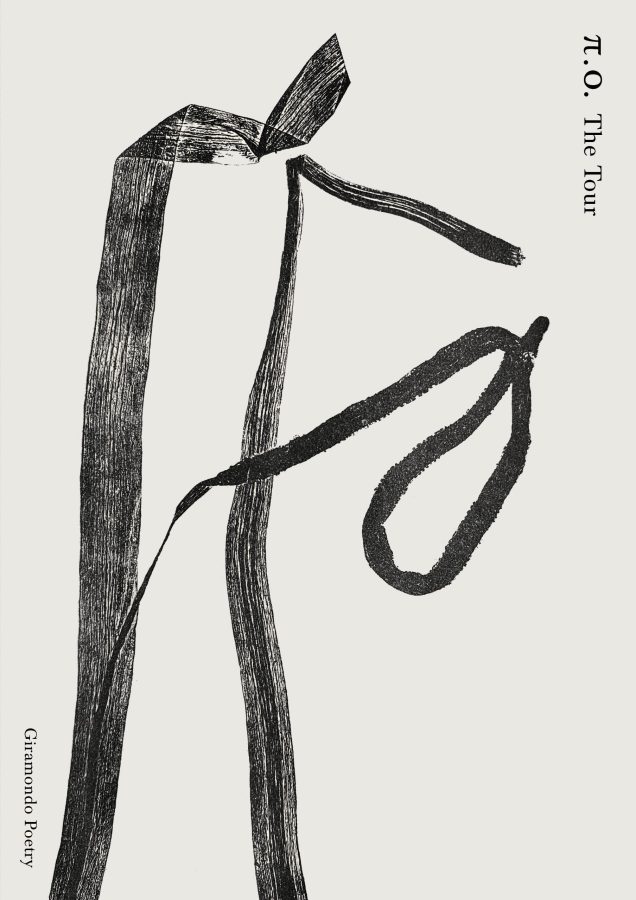The Suspended Image
How long will this go on? The spruce
is there again today, existing by itself, over & over
green sleeves folding moss
& needles into blood-red tips, conelet
fingers pointing out the blue sky of pollination
fine dry yellow powder over everything
hot seed alive for the sap-wet spruce flower
amusing the fresh wind
spruce needles sifting currents, heat
split like old bark, octagons of rusty ironstone
in tessellated cairns by the bush trail
drips of sticky pine sap, hard drips
hung from mossy branches like toffee
like tears of smoky glass, the light
caught & pearled in a soft-set jewel
flecked with dust like eocene amber
beetle wings crushed in webs
under cool wood corridors, the scent of pine
& ladybird larvae, ants in curious lines
around the trunk, sticky emmet feet
hard black light in their legs, photons in articulate joints
antennae flick flick flicking around
as if the shade is light, does not cease with death’s
installations of darkness
rising like mist through the branches
a mountain’s architecture of green
& orange sandstone canyon
nests for the whole blue earth, the invisibly hot
stars beyond the blue, threads of ice
spun up along the edge of the emergent wind
over an abyss of honeycomb valleys
dark infrastructure of ice crystals
forming waves of white-water clouds
streaming up over the cliffs
to disperse where I stand, spots of water
falling through spruce branches, water dripping down
over drips of hard sap, little mirrors everywhere
reflecting the lemon tree across the lawn
as if I could see none of this were there at all
shaped like the currawong’s yellow eye
sharp as a tack looking right through everything
the way we knelt together
by the window in the hotel, arms on the concrete
windowsill looking out over grass country
& you asked me what makes the patterns on top
of the grass? the wind, it’s the wind
I said, flowing like water over the grass
through the long seed heads are streams of wind
currents of air swirling and unswirling
across the field, set loose over open grasses
pushed around thickenings
hard buildings & trees, groups of trees
stands of trees & fence posts, mounds, people standing
all dark knots in the flow of the wind
over the world, the flow of the wind is like water
like a parable of life, I said
as the grasses down in the field across the road
were caught in a rush of shadows rippling
through the tall grass seed heads
an impression of clouds, a murder of clouds
on the indifferent earth, dark knots
of resistance steady in the wind’s flow
you can ask
what is this we are in? your whole life
I said, if you want to, & then
we just looked out through the glass
at the wind in the grass, the amethyst sky
like a television
standing here
the poem itself becomes amber
all the pine needles seen at once, over & over
the earth’s offspring growing around us
invisible shapes in the cool breeze
resting and lifting off my face in the trees
like I am an animal, just like the rest of them
gone past beauty, past the importance of beauty
light falls away like dead cells
all does flow down to land estranged from that
which is most familiar, things perfected
by their like like two columns of light
falling through the branches of the spruce
onto the bed of moss and moist brown leaves
wet grass and tiny quartz pearls in the dirt
rotten amanita husks slumped dry
fallout zones of spores flourishing downward
from fire to water, water then rising to fire
the dust by the tree trunk held down by a fine wet web
an impression of mist, water droplets
where our heavy oars plant in a sea of earth
green around ultraviolet islands
human gardens growing up sticks & knots of twine
human wire tendriling through nature
like the yellow eyes of the sunflowers
even those that fail to grow, their negative circles
alive in the mind only
for there is no place that does not see you
even if
we build a little wall here, a low hedge there
take summer poles from the orchard trees
& make a bow, in the end, after all the approximations
the arrow will still reach its target & be still
the bow is called life, its work is death
the water has always been the same
each time it flows around your shins
like wind around a stand of silver trees
the bean grows round and round a swirl of matter
leaning into itself, closer to the other, stretched
right round out & up the lithe hot fur
bursting all over with leaf buds, more beans
torque at the centre of the gyre
leaning
on the door frame I watch
a heavy shawl of rain so thick & straight
it falls dead silent into the ambient field
where all is green, the bruised black sky
liquefying, sagging mercurial folds
down into the toneless earth, water droning
steady over rocks inside the swollen creek
air churned, bleeding petrichor
river bone as you walk into my legs
to look out too to consider this fulcrum
at the edge of precipitation, the cold
layer of air, the way the cold air
settles on your face like a veil
as the rain approaches, stalls, an alate squall
spinning through the concave shadow
of the rain before thick drops
shatter the leaves into a mantle of wet dust
as it arrives, the heavens finally
closing in around us as we acquiesce
skin to water, the slow dissolve
into gravity, the wind stops absolutely
& all is still, a granary of stillness
held up dry amidst the downpour.
It began for me with a single drop of water.
It was 1992. My first time in the Blue Mountains since a primary school excursion to the Three Sisters and Jenolan Caves in 1976, when I was stoked to bring home an elaborate Three Sisters snowdome with a calendaring dial built into the bright red stand.
I stood with my face almost touching a wall of glass, a sheer window looking out into an immense depth, a profound, almost unfathomable dark green chasm girded by sandstone precipices and a halo of mist and cloud. It had been raining all afternoon. In the diminishing light the distant wet cliffs looked dark orange, blood red, gold. A motionless wing of pure white cloud floated over the valley floor like an apparition on a billow of air.
The small eyrie that belonged to my new girlfriend’s uncle had been built on the edge of a dramatic plunge above Leura Cascades. My girlfriend and I, on a study break from uni, had spent a rainy day between bed and a luxurious spa-bath set beside the window. Standing in a cotton kimono I’d brought back with me from Japan, a candle burning beside the bath, I looked out into the deepening abyss.
A single drop of water held fast to the edge of the glass, and I could see the entire world reflected in the mirror of its convex meniscus. A mercurial arc of raincloud and bright vapour. The small white filament of the cloud below, suspended in an aperture of complete darkness. A pinprick of fire, the candle inside the studio behind me, a hot orange spark in the sphere. In this small globe I could see the vast gulf of the world outside, its transcendent depths, and the interior’s sole particle of fire, the flare of an innermost confidence that seemed to flicker with the breath of my lover who I could hear sleeping in the nearby shadows of the bed. The world was abstracted for a moment, materially and poetically, its twofold inner and outer lives inverted and enclosed in a drop of rain.
I decided then and there I had to stay. When we woke the next day, we hatched a plan to live in the Blue Mountains forever. We found a place to live and moved all our things. Our new home was just around the corner from the eyrie, but now, still reasonably close to the edge, we had our own views of the often moisture-laden depths. From the top of our street, looking almost directly south down the hill, the face of Mount Solitary loomed away over the rooftops and Monterey pines, the long sandstone ramparts of Kings Tableland reaching further back into the valley. At the back of the house, a large sunroom faced west. From the window, through the trunks of two spruce trees, branches of apple, plum and apricot, the town of Katoomba could be seen perched high on a ridge across a steep gully and the narrow western arm of Leura Falls Creek.
This room became my writing place for six years. It was sitting at this window that I made my first book of poetry, Rhythm in a Dorsal Fin. It was here, early one sunny Saturday morning, that the sunlight and fresh sound of water splashing in the laundry reminded me of hitting the surf early on the weekend, years before. I wrote the book’s title poem in a flash. Just below the window in the backyard I became, over the years, a connoisseur of the always changing atmosphere. As was common back then I smoked at least half a pack of cigarettes a day. Stepping out regularly for a ciggie I came to know the still, icy mornings of early spring, the clear, bright days of summer and their grassy perfume, the first wood-fire smoke of autumn evenings. I learned about the cold obliteration of the upper-mountains winter nights, the sky ringing cold as a brass bell, all the stars quivering, the town lights hard as shards of ice, coal trains screaming like banshees on the frozen western line.
Just overhead, always a moving atlas of clouds. From my window facing west I watched them all, arrangements of worlds coming and going. Quick white horses bolting by in the fast, upper-mountains jetstream. On calmer days, languorous balloons bouncing over the plateau on their way down to the coast. The best, in my view, were the southerly cloud fronts and burgeoning summer storms that lunged along the Megalong Valley and smashed into the cliffs like giant waves, the great walls of crashing clouds bursting up over the edge in plumes of foam and spray that rose into the sky, the air sometimes so wet with the stormy breach that heavy drops of fresh water fell over the house like an intermittent coastal spindrift.
Despite the elevation and the expectation of a crisp, altitudinal aridity, in time the mountains can prove to be very very wet. In many ways the mountains are much like a coastline. The average precipitation in Katoomba is almost one and half metres every year. That’s about half a centimetre every day. The air is frequently hydrous, especially when the clouds begin to catch in the treetops and sink to form dense fogs, the hanging mists that shroud morning in a radiant, textureless mantle, or the thick wet mists that congest evening, or the almost impenetrable night fogs that can make getting home a job of joining the dots, street light to street light. The mists are like lakes that have atomised into the atmosphere, the whole world enveloped in swirling cascades. They sublimate into trickling walls of moss, cold dank pools and rivulets beside the roads. There are streams everywhere. In the summer, the mists are complemented by intense storms and torrents of hail. And year round, as I came to know by sitting at that west facing window, over and over the oceanic clouds crash against the cliffs, their foamy heads of spray sent up into the air over the houses in an infinite array of water droplets, whole worlds inverted in their motion as they hang on to the edges of the real before slipping and dropping into the abyss.
The result of all this water is an especially precipitous atmosphere. It feels sometimes like living in a spacious moist suspension, where sensation is poised between radical proximity and radical depth, like seeing the world reflected in a raindrop. The mood is interiorised, condensate, liminal, and tonal, while being as open as possible to the wider boundaries of the cosmos. See, for instance, the dewy, spectral landscapes of Oberon painter Joanna Logue, or the tonal viscosity of landscapes by acclaimed Blackheath painter Robert Malherbe. Delia Falconer’s sublime 1997 novel, The Service of Clouds, ends with an exemplary image of the precipitous drop:
As I stand at the railing of the Niagara the wind whips my hair around my face so that it flies out in all directions of the compass. The air is so luminous it bulges. It is poised, on the horizon, like a great water drop, trembling on the sharp lip of a cliff.
I’ve been struck by how frequently the mountains are figured in tropes that are aqueous, flowing, maritime, sometimes even lachrymose. The Gundungurra tell of Gundungurra country, when the part-fish, part-serpent Gurangatch is chased by the tiger cat Mirragang. Gurangatch’s leaping and burrowing forms rivers, waterholes, moist caves and waterfalls, his offspring swimming today in watercourses throughout the mountains. This part-riverine, part-labyrinthine epic is connected to the deep continental mythos of the rainbow serpent, its narratives of mountainous groundwaters alive within speaking distance of Sydney’s CBD, remarking on its sovereign limits.
How uncanny that one of the first Englishmen to walk across Dharug and Gundungurra country should write about water when writing about the mountains. In the bunyip aristocracy of Australasia William Charles Wentworth inaugurated a complex colonial literary preoccupation with the hydration of the mountains, writing ‘how lone thy torrents’ roar,/As down the cliffs precipitous they fall.’ Recollected in Cambridge almost ten years after the 1813 crossing, the ‘azure brow’ of Wentworth’s mountains supposedly hides a griffin’s treasury of ‘rich glittering heaps’ beyond the torrents of the Nepean and Hawkesbury rivers, whose watersheds both range up into Gurangatch’s country. On 17 January 1836, after only a few days onshore in Sydney, 26-year old Charles Darwin made a further Atlantean leap, describing the view from Wentworth Falls as ‘a bold sea-coast’:
By following down a little valley and its tiny rill of water, an immense gulf is unexpectedly seen through the trees, which border the pathway, at the depth of perhaps 1,500 feet. Walking on a few yards one stands on the brink of a vast precipice, and below is the grand bay or gulf … the point of view is as if at the head of a bay … imagine a winding harbour, with its deep water surrounded by bold cliff-like shores …
Darwin’s Triassic harbour is another man’s storm. Later in the nineteenth century, Henry Lawson opened his double sonnet ‘The Blue Mountains’ by imagining ‘ferns with moisture dripping … /my feet on mosses slipping,’ a waterfall ‘lost in spray/ When mountain breezes sally’. The trope of the mountains as sea-coast gives way to the disappearance of watery essences as spray that disappears into the abyss, as waterfalls that never reach the distant valley floor, their shower and droplets turned to rainbow mist in the sunlit gulf before they reach the bottom. In William Govett’s 1836 Sketches of New South Wales the headwaters of the Grose River are described as falling ‘into the deep abyss… [a] full twelve hundred feet … into misty hollows … the water gliding into it seems again transformed into its parent vapour, for not long after its fall, it assumes a misty appearance, and a moment’s gaze into the dark void is sufficient to appal the stoutest heart.’ Govett’s Burkean terror at the precipice is lubricated, somewhat gothically, by the atomisation of water at the edge of twin sensations of localised corporeal fluidity and absolute depth.
The suspension of volumes of water in the Blue Mountains atmosphere has had a persistent fascination for writers. Tom Shapcott’s 1957 poem ‘Blue Mountains after Rain’ erotically announces
WATER: leaves are robins to caress and breast you. The love trifling leaves grace and dip and tangle webbed with your sun-fallen mirrors …early morning trees here know clouds and the breezy sunshine
Perhaps more ironically, in ‘Two Short Poems, after Li Po’ (1985) John Tranter writes, ‘Why do I live here, in the Blue Mountains?/Ho hum, another Valium’ washed down by a stream of heavenly cocktails. A decade later, around the same time that Delia Falconer was writing The Service of Clouds, late Blue Mountains poet Kerry Leves published his second book Territorial, writing of the mountains as a mist enclosed ‘water world … [where] loops & whorls,/clouds are fingerprinting/cafe windows,/cliffsides drop into the bush’. Like Shapcott and Tranter, Leves contemporises the theme, ‘[a]s if the earth/had sucked smoke from a water pipe/hills exhale clouds’ and localises it, the ‘shine like glass in the rain/…Grey waves wash in/…the lone/tai chi practitioner/in a sodden park/describes paradisal birds’, but the figure is one in a continuum, ‘as dizzyingly /as looking down a waterfall.’ From the same period, Diane Fahey’s sequence ‘In the Blue Mountains’ is awash with rain. Starting, like Darwin, ‘At Wentworth Falls’, Fahey observes how
… streams plummet to form a seamless skin…. From the cascade a smoky rain blows up: skin swathed by tingling dampness Rainbows of spray… I climb the fluid permanence of stone.
Fahey’s meditative intermingling of skin, spray, depth and interiority recalls Govett’s sensation of the precipitous ‘misty hollows’ nearby. Rain is constantly falling, ‘a dense grey masking skylines of rock,/… the watery echo of my steps behind me,/my skirt bunched against drenching./… the rain is a cool noise healing/… an open window past drowning vistas’ (‘Rain: At Wentworth Falls’), and ‘[d]rops dampen my hair, cool my skin,/as I remember the falls split between/day and dusk, mauve or emerald veiling/ferns on a flooded ledge…’ (‘After Rain : In Sight of Katoomba Falls’). Water falls and atomises:
You crouch on a template of wet stones. Quicksilver tongues leap from a silken drop … your fingers touch the water’s pulse, its flight from source to turbulent birthing. Near your hand, a splashed leaf — pearls in a green ear. (‘Waterfalls’) mist floods the valley, curlicues rise to uncoil in freer air. The leaves you tread are copper, oxblood, wear a leathery sheen after rain (‘Near Katoomba Falls’ )
In Anthony Lawrence’s fantastic Gary Snyder-esque poem ‘Dusk Light and Approaching Snow, Porter’s Pass’ (1998) Fahey’s tranquil mists are dispersed as we look again into Charles Darwin’s cold sea coast, this time below Blackheath:
… snow clouds are massing
sailcloth white,
their undersides like wake water
against a deep grey hull of sky
… fog
blurring the underside of the darkening ether
More recently, in his excellent sequence ‘Nine Views of Mt Hay’ (2003) local Blue Mountains poet John Watson writes of ‘[s]tanding on this coastline … branches of rain/Across a valley’, the masterful ‘A Dialogue as Coda’ opening with ‘[b]reezes of raincloud’. Only last month, the exciting new Blue Mountains based Hope Street Press published Deb Westbury’s new and deeply moving collection, Winter in Stone Country, where we read in the title poem that ‘tendrils of fern or slender rootling/have opened a vein for water’, the ‘purple canyons’ of the mountains (‘Closing Time’) dilating to receive and enfold all the world’s tears.
These are all sparkling beads in a long story about water, saturation and oceanic space. I now live across the highway from where I first arrived in the mountains in the 1990s, on the northern side of the ridge, our home in a sweet quiet gully by a clear, freshwater creek. I can hear it tinkling and gurgling right now as I write. The creek begins as a trickle just off the edge of the highway, but then, only a minute’s walk from here, it is fed by a natural spring that emerges from a cleft in the hillside near a small cave. The spring is well-known. At all times of the day and night people pull up to fill plastic bottles from what is believed to be a healing source. The spring water flows down through the forest floor, past giant tree ferns that stand taller than a person, runs past a few houses and out into the bush where it becomes known as Govetts Creek. Remarkably, we live by one the highest watersheds of the Hawkesbury River system. Only a few kilometres from here the water that emerges from the ground and flows past my house reaches the junction of the Alpheus and Arethusa Canyons, where it cascades over the Arethusa Falls into the Grose Valley. From here it joins the Grose River, then the Nepean River at Yarramundi, where it becomes the Hawkesbury. I sometimes muse how the natural spring water I cup in my hand near my house makes its way to the sea, by then mixed with the effluvia of western Sydney, past Robert Adamson’s place on the Hawkesbury’s tidal verges.
The voluminous waters of the mountains, its mists, fogs and creeks, its pearlescent waterfalls and snow melt, all run down and carve the sandstone valleys. After living for a while in the mountains one comes to understand that the sensibility here is formed not only by a sensitivity to types of watery flow and the many infused atmospheres, but equally to the water’s nearby creation of magnitudes of immense depth. Everyday life in the mountains is not so much affected by the palpable experience of altitude, or ideas of prospect or spectacle on their own, but far more by a sensation of yawning depth and distance. Over time, living in small towns at close quarters amidst the mist and trees, the chasms of the nearby valleys begin to feel, as was felt by Darwin, more like deep harbours than foothills viewed from on high. An odd spatial inversion does its work, and the sense of living at altitude is replaced by the perception of being surrounded by various colossal gulfs.
Indeed, it should be noted that the mountains are not really mountains at all. In ‘Nine Views of Mt Hay’, John Watson reminds us that the Blue Mountains really are best thought of as ‘a bare plateau/The size of Liechtenstein’. Including both northern and southern reaches they are actually more than seventy times the size of Liechtenstein. But they are indeed an uplifted plateau of Triassic sandstone whose canyons, since Gondwanan days, have been carved out by water flowing through the cracks and fissures of the rising platform, the streams, waterfalls and rivers relentlessly cleaving down through the rock to forge the sharp escarpments as great edifices of sandstone break and fall. The movement, over eons, has been an ineluctable and immense carving away.
Living on the plateau as it rises, there is little lateral sense of the horizon or the awesome vista until one gets up close to the edge. Occasionally, when at the shops, or from the highway or railway platform, or seen briefly down the end of an unknown street, a vision of the chasms will appear suddenly like a glimpse of a distant ocean. But most of the time, life on top of the plateau is conducted close-up. The bush is always nearby, the wild sky usually contained in a crucible of green treetops. There are many gullies and ridges, small snickety roads through damp fern-laden corners, laneways and hidden, overflowing gardens, a complex human labyrinth tattooed along the plateau’s long winding spine. This sense of an enclosed, human scale experience of day-to-day life in the mountains belies the physical elevation of the landscape, but is not formed by the sense of an elevated visual or imagined perspective. That is, until one gets to the edge. Here, the human enclosure reaches its absolute limit, the escarpments precipitously fall away, the plateau, and the town slowly sculpted by the encroachment of an inexorable negativity. The imagination only lingers on being so many metres above sea level.
When Charles Darwin began reaching for maritime metaphors to grasp the depth of the chasm at Wentworth Falls, he wrote parenthetically that ‘below is a grand bay or gulf (for I know not what other name to give it)’. Darwin was not unnaturally lost for words, as the depth is truly unnameable. Standing at any of the numerous lookouts around the mountains reveals a gulf in sayability, which is likewise not so much a gulf in what can be sensed or deeply known, but more the affect of a sublimely rendered speechlessness. The depth is perceived, but simply cannot be spoken all at once. Interestingly, when visiting Sydney in 1836 Darwin also wrote that ‘every one complains of the high rents & difficulty in procuring a house’. Clearly the yawning abyss at the heart of Sydney conversation has also changed very little. Darwin’s sense of the unsayability of the Blue Mountains’ chasms had been anticipated only the year before by William Govett, whose aforementioned stout heart had also ‘gazed into the dark void’ of an unnameable negativity. It’s apposite to recall that the painter Eugene von Guérard, who painted the same grand depths encountered by Darwin and Govett in awesome works such as Weatherboard Creek Falls, Jamieson’s Valley New South Wales (1862) and Govett’s Leap and Grose River Valley, Blue Mountains, New South Wales (1873), produced his paintings in his Melbourne studio from plein air sketches made in 1859, the sublimity of his achievement being somewhat a consequence of great spatial and temporal distance, the negativity of withdrawal and the solitary depths of compositional memory.
The unsayable existential depths of the Blue Mountains’ chasms prevail. In his 2007 poem ‘Sublime Point’, local poet David Brooks writes
Standing at Sublime Point, looking out, is like death or sudden viciousness, access to a beauty that you never thought you’d have, an idea that changes everything. ... birds dive into a sea of hieroglyphs dense as an empty page.
Brook’s evokes Darwin’s oceanic expanse alongside the twin gulfs of sublime terror and mortality, the emergence of poiesis itself from the abyss of the empty page. The unsayable also has its uncanny and neo-gothic modes. In ‘Pea Soup’, mountains poet Mark O’Flynn writes of ‘[f]og so thick it is like glaucoma. The spirits/are said to be let loose in fog such as this…. you/can imagine the world evaporated.’ Dorothy Hewett, who spent her last years in Faulconbridge, wrote of her ‘dark cottage’ halfway up the mountains, the ‘darkness out there’ textured by the encroaching carriage of death up and down the highway, of life ‘dropping away in a cavalcade of loss’ as ‘the currawong repeats/his warning cry/distils all winter in his golden eye.’ Anthony Lawrence writes of a deathly ghost train in ‘Incident at Mount Victoria’, where ‘absence/woke everyone on a quiet trackside road’, the spectre of unsayable negativity and mortal distance ending with the lachrymose hydration of ‘tears [that] began/and fell, all the way down into Central.’ The abyss of the unnameable depths necessarily involves the distancing and carving away of temporality and human frailty, the great tectonic time-scales of geological uplifting and aqueous erosion, the everlasting narratives of Gundungurra and Dharug creation, the wet skin and tears of those living on the plateau, just nearby the grandest edge.
Now it is spring we must wait for the summer fires, our fingers crossed by the healing stream. Fires are reasonably rare in Blue Mountains poems. As I write, a spray of foamy cloud rises over the ridge, seeming only metres overhead. I am in an old ship, creaking in the wind above the plains. The grass under the spruce is still wet from a morning shower, Govetts Creek sparkles and runs. In a sense, the whole world is suspended here, amidst love and children, like it was a quarter of a century ago when I first came to the mountains and looked into a drop of water that reflected the depths of the Megalong Valley and a single white cloud rising like a breath. The image is the same, radical proximity and radical depth, an atmosphere of water and an aperture onto the immense void. Life, suspended right there before my eyes.
Authors and Works
David Brooks, Urban Elegies, Island Press, 2007.
Charles Darwin, Journey Across the Blue Mountains to Bathurst in 1836.
Diane Fahey, The Body in Time, Spinifex, 1995.
Delia Falconer, The Service of Clouds, Picador, 1997.
William Govett, Sketches of New South Wales, 1836.
Jorie Graham, Erosion, Princeton University Press, 1983.
Dorothy Hewett, Halfway up the Mountains, Fremantle Arts Centre Press, 2001.
Anthony Lawrence, New and Selected Poems, University of Queensland Press, 1998.
Henry Lawson, In The Days When the World Was Wide, 1900.
Kerry Leves, Territorial, AnT Studios, 1996.
Mark O’Flynn, Untested Cures for Modern Day Ailments, Picaro Press, 2011.
Martin Thomas, The Artificial Horizon: Imagining the Blue Mountains, Melbourne University Press, 2003.
John Watson, A First Reader, Five Islands Press, 2003.
William Charles Wentworth, Australiasia, 1822.
Deb Westbury, Winter in Stone Country, Hope Street Press, 2016.





